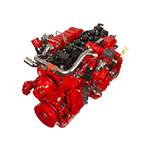Nov . 22, 2024 10:19 Back to list
automobile brake drum
Understanding the Automobile Brake Drum A Key Component of Vehicle Safety
The brake system is one of the most vital components of any automobile, ensuring that vehicles can come to a safe stop when necessary. Among the key elements of this system is the brake drum, an essential part that plays a crucial role in vehicle safety and performance. In this article, we will dive deep into the characteristics, functions, advantages, and maintenance of brake drums.
What is a Brake Drum?
A brake drum is a cylindrical component found in drum brake systems. It is typically made from cast iron or aluminum, designed to withstand the heat generated during braking. The brake drum works by housing the brake shoes, which are lined with friction material. When the driver applies the brakes, hydraulic pressure pushes the brake shoes outward against the inside surface of the drum, creating the friction needed to slow down or stop the vehicle.
Functionality of Brake Drums
The primary function of the brake drum is to facilitate the application of friction necessary for deceleration. Unlike disc brakes, which utilize a rotor and caliper system, drum brakes generate friction internally. This design allows for a greater surface area for the brake shoes to contact, potentially providing better stopping power in certain scenarios. Additionally, brake drums can also include features like self-adjusting mechanisms, which help maintain proper clearance between the brake shoes and the drum, ensuring efficient braking over time.
Advantages of Brake Drums
automobile brake drum

One of the significant advantages of brake drums is their cost-effectiveness. Generally, drum brakes tend to be less expensive to manufacture and replace than disc brake systems. They are often found in older vehicles and are still prevalent in some modern applications, particularly in rear braking systems, where they can offer enhanced brake force and stability.
Moreover, brake drums offer excellent performance in specific conditions, such as wet weather, as their design can somewhat shield the braking surfaces from the elements. Additionally, because they have a larger surface area in contact with the brake shoes, they can dissipate heat more effectively during extended braking.
Maintenance and Common Issues
Proper maintenance of brake drums is crucial for ensuring vehicle safety. Drivers should regularly inspect their brake systems, looking for signs of wear such as unusual noises, decreased braking power, or pulsating sensations while braking. It's essential to check the condition of the brake shoes and replace them when they show signs of significant wear.
One common issue with brake drums is warping, which can occur due to prolonged overheating. Warped drums can lead to uneven braking and should be machined or replaced to ensure safe operation. Additionally, brake drums can accumulate dust and debris, which may inhibit their effectiveness. Regular cleaning is recommended as part of standard vehicle maintenance.
Conclusion
The brake drum plays an essential role in automobile safety, providing effective braking power and control. Understanding its function, advantages, and maintenance will help drivers appreciate this critical component of their vehicle. By ensuring regular inspections and proper care of the brake system, drivers can enhance their vehicle's performance and maintain safety on the road. Whether in classic or modern vehicles, the significance of brake drums cannot be underestimated.
-
Scania Brake Drums: OEM Quality for Optimal Safety & Durability
NewsAug.16,2025
-
R.V.I: Advanced Remote Visual Inspection for Precision
NewsAug.15,2025
-
Discover HYUNDA: Innovative Vehicles, Equipment & Solutions
NewsAug.14,2025
-
R.V.I: Unlock Advanced Insights & Real-time Performance
NewsAug.13,2025
-
Kamaz Brake Drum: Durable & Reliable for Heavy Duty Trucks
NewsAug.12,2025
-
Heavy Duty Iveco Brake Drum - Premium Quality & Safety
NewsAug.11,2025
